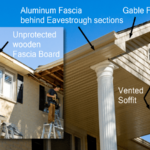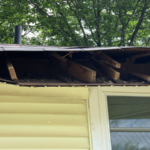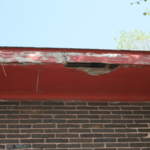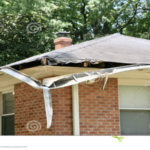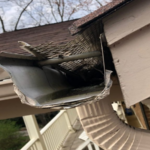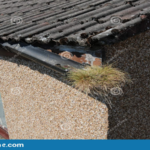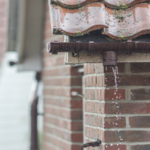If you’re not sure whether or not your gutters are in need of repair, it’s always best to err on the side of caution and call a professional. They will be able to assess the condition of your gutters and make recommendations accordingly.
What are some signs that your gutters need to be replaced?
- One of the most obvious signs that your gutters need to be replaced is if they are sagging or pulling away from your home. This is usually due to the weight of debris that has built up over time, and it can cause serious damage to your home if left unchecked.
- Another sign that your gutters need to be replaced is if you see water spilling out from them when it rains. This means that they are no longer able to effectively channel water away from your home, and can lead to flooding and water damage.
- If you notice that your gutters are starting to rust or corrode, this is another sign that they need to be replaced. This can weaken the overall structure of your gutters and cause them to fail prematurely.
- Finally, if you see any cracks or holes in your gutters, this is a sign that they need to be replaced. These cracks can allow water to leak into your home, which can cause serious damage.
What is the most common problem with gutters?
The most common problem with gutters is that they tend to get clogged with leaves and other debris. This can cause water to back up and overflow, which can damage your home’s foundation or cause other problems.
How often should house gutters be replaced?
There is no definitive answer to this question as it depends on a number of factors, such as the age and condition of your gutters, the type of materials they are made from, the climate in your area, and how much debris they collect. However, most experts recommend that you have your gutters inspected at least once a year and cleaned as needed. If you live in an area with a lot of trees, you may need to have your gutters replaced more often.
How do I test my gutters?
- The first step is to identify any areas where your gutters may be leaking. Check for any cracks or holes in the gutters, and look for any signs of rust or wear and tear.
- Once you have identified any potential problem areas, the next step is to test the gutters to see if they are indeed leaking. The best way to do this is to pour a small amount of water into the gutters and then check for any leaks.
- If you do find any leaks, the next step is to repair them. This may involve patching up any holes or cracks, or replacing any damaged sections of the gutters.
- Once you have repaired any leaks, the final step is to test the gutters again to make sure they are no longer leaking. If they are still leaking, you may need to repeat the above steps until the problem is fixed.
What is the life expectancy of gutters?
The lifespan of a gutter depends on the material it is made of and the environment it is in. Copper gutters can last up to 100 years, while aluminum and galvanized steel gutters will last 20-30 years. PVC gutters have a lifespan of 20-40 years.
Should you replace gutters or roof first?
There is no easy answer to this question as it depends on a number of factors. If your roof is leaking, then it is obviously a priority to fix that first. However, if your gutters are not draining properly, then water can build up and cause damage to your roof. It is also important to inspect your gutters and roof regularly to make sure they are in good condition and not in need of repair or replacement.
How do you fix gutters that don’t drain?
- If your gutters are not draining properly, the first thing you should do is check the downspouts to see if they are clogged. If they are, you can clear them out with a plunger or a plumber’s snake.
- Another possibility is that the gutters themselves are clogged. You can try using a garden hose to flush out the gutters. If that doesn’t work, you may need to use a ladder to manually remove the debris.
- In some cases, the problem may be that the gutters are installed incorrectly. If they are not sloped properly, they will not drain properly. This is a job for a professional gutter installer.
- Finally, if none of the above solutions work, it is possible that the gutters are too small for the amount of rainfall your area receives. In this case, you will need to install larger gutters.
Can gutters cause water damage in ceiling?
While gutters are meant to protect your home from water damage, they can actually cause water damage if they are not properly maintained. Clogged gutters can cause water to back up and seep into your home, which can lead to water damage in your ceiling. To prevent this, make sure to regularly clean your gutters and repair any damage to them as soon as possible.
Are gutters easy to fix?
It really depends on the problem. If the issue is simply that leaves and debris are clogging the gutters, then the fix is relatively easy and simply requires cleaning out the gutters. However, if the gutters are sagging or pulling away from the house, then the issue is a bit more serious and will require some repairs.
Conclusion
Your gutters are important for keeping your home in good condition. If you think they might be bad, it’s important to have them checked out by a professional. There are a few signs that your gutters might be bad, including: leaks, cracks, rust, or holes. If you see any of these signs, it’s time to have your gutters checked out.

